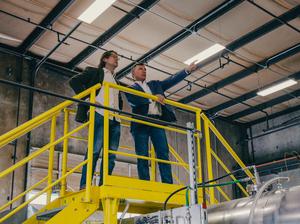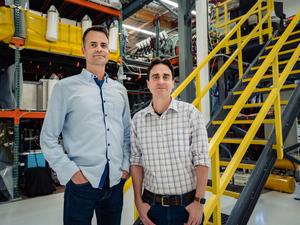
Seattle-based fusion company Zap Energy has raised a $160 million Series C round.
The funding, announced Wednesday, comes as Zap Energy aims to create a system that produces more energy than it consumes. The company, which is targeting carbon-free energy, said in a blog post Wednesday that last week it created plasmas, or the "the hot, dense form of matter found in stars," in its prototype.
“We’ve shown through both simulation and experiment that sheared flows can stabilize fusion plasmas, and that the stability should extend to a commercially viable scale," Uri Shumlak, Zap Energy's chief science officer and co-founder, said in the blog post. "The Zap Energy team has made rapid progress since this technology moved out of the lab, especially with recent team and investment growth.”
Zap Energy, which was founded in 2017, said its fusion technology doesn't require superconducting magnets or high-powered lasers, unlike other fusion technologies. The company said this could create "an opportunity to build smaller, less complex, more scalable systems that will more quickly bring fusion energy to the grid."
The company's $27.5 million Series B came in May 2021.
Zap Energy's $160 million round, however, is dwarfed by that of Everett-based fusion energy company Helion, which raised $500 million in November and plans to have its seventh-generation fusion generator up and running in 2024. The company can secure an additional $1.7 billion if it reaches key milestones.
Despite the buzz and money around fusion energy, the technology has long proved elusive for scientists. A post from the Department of Energy's Oak Ridge National Laboratory notes nuclear fusion reactors hit temperatures of 150 million degrees Celsius, or 10 times hotter than the center of the sun. The heat is designed to force atomic particles to collide and release energy, like in the sun. Creating a power plant that can withstand the heat and pressure while still producing energy is a major challenge.
Daniel Jassby, a retired Princeton University plasma physicist and a critic of commercial fusion efforts, noted the "hubris, self-deception and ludicrous promises that have characterized the fusion enterprise from the 1950s to this very day" in an April book review for the American Physical Society.
Lowercarbon Capital led Zap Energy's Series C, while Breakthrough Energy Ventures, Shell Ventures, DCVC, Valor Equity Partners, Addition, Energy Impact Partners and Chevron Technology Ventures participated.
Local energy technology companies have landed major funding rounds recently. In addition to Helion and Zap Energy, Woodinville-based battery technology company Group14 raised $400 million in May.






